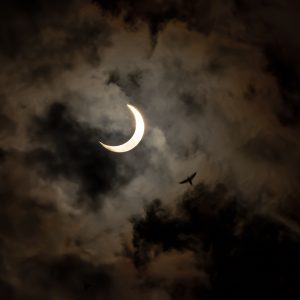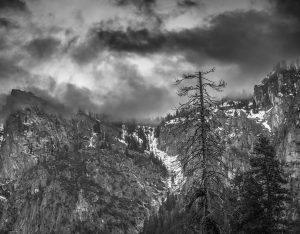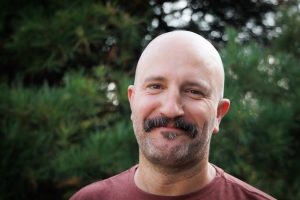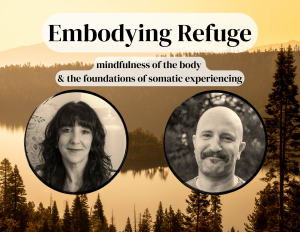It has been ten years since coming home from prison. Though this is just the most recent of my annual stumbling down memory lane, the decadal anniversary feels evocative of something bigger.
The past ten years have been disjointed in terms of my relationship to my incarceration. I feel like I spent the first half of the decade doing my best to push my prison history away, to avoid thinking or speaking of its prominence in my life. I hid it from people. I feared the judgement and repercussions that might follow.
Then, five years after coming home and following some encouragement from my wife, I stepped out of those shadows and opted for a path with transparency. I wrote some stuff and let folks read it. I told my story in a podcast that was popular enough that there was no sense trying to hide from it any longer. It was a let-the-chips-fall-where-they-may sort of moment for me. If my life up to that point had shown me anything, it was that I’d found the greatest freedom following those moments when I’d decided it was no longer worth trying to manage significant parts of my life. Letting go of my invisibility project was one of those moments.
I then spent the bulk of the subsequent five years owning my history in prison. Writing more about it. Talking more about it. Doing interviews and more podcasts. I suppose it could be thought of as a period of integration. I went through a similar period of integration following my second year in prison, when I fully accepted my station in life and found ways to thrive in it. The last five years were no different. A lot of acceptance, a lot of letting go, and a lot of inclusion.
The end of that five year process of inclusion brings me to today, a day of reflection. A day of looking at where I came from and where that coming seems to be going.
When I was in Folsom State Prison, I was part of a group called the Contemplative Fellowship. This group met in Greystone Chapel on Monday evenings. Technically, our weekly event was sponsored by the Catholic chaplain and was intended as a space to practice Centering Prayer, the Christian variant of meditation made popular by the late Father Thomas Keating. But the men who came to the Contemplative Fellowship weren’t all Catholic. I’m not even sure it would make sense to say that most of them were even Christian, though many of them were. The man who’d invited me to attend the meeting was certainly Christian, but he was a Christian who knew that I was mostly atheist and Buddhist-leaning. I didn’t get the sense he was trying to convert me to anything.
Suffice to say, the men who met in Greystone Chapel on Monday nights were an eclectic bunch. It was apparent we all had our own spiritual paths and that we all studied from within different traditions, but that was never an issue. Despite our different likes and preferences, we all met in loving fellowship for a couple of hours every week. We entered the chapel and exchanged hugs and handshakes. We sat in a circle silently together, though, occasionally, one of the men would guide us in meditation. When the meditation was finished, someone would share a bit of wisdom, something for us to discuss within the circle. Sometimes, this bit of wisdom was a simple reading from a spiritual text and sometimes this bit of wisdom was a prepared talk about a subject relevant to our path. Ours was a path of transformation and of love.
When the meditation and discussion time was over, most of us remained in the chapel for the duration of our allowable time on the yard. We’d continue the discussion started earlier or catch-up with folks we hadn’t seen in a week. A number of men would venture to the back of the chapel where, beneath a painting of the last supper with convicts as Christ’s disciples, we’d exchange shoulder rubs or chiropractic back-cracks. In a world where human touch was nonexistent save for the violence, these moments of mutual, physical care were priceless.
At the Contemplative Fellowship, I met a man from the free world named Ray Leonardini. A former attorney with a knowledge across religious mystic traditions, Ray volunteered for the Contemplative Fellowship as an act of love and of service. We took a liking to each other and he served as a mentor and spiritual touchstone for me during my time in Folsom State Prison. When I left Folsom, he gave me a book called “The Intellectual Life: Its Spirit, Conditions, Methods”. I opened the book again this morning. Two things struck me.
First, I read this from the beginning of the eighth chapter: “You have come now to the moment for producing results. One cannot be forever learning and forever getting ready.”
Then, I read this from Ray’s personal note to me on the opening page of the book: “May these principles guide you in your journey and bring you to safe harbor, and the same for all the people you will mentor.”
Why did these strike me? Because they speak to where I am at today. Prison prepared me for something. The ten years after prison also prepared me for something. Since embarking on a path that I can loosely refer to as spiritual, there has always been some part of me that has felt I was preparing for something, though what that something was remained elusive. I’ve started to think that the spiritual path, which for me is generally the path of the Dharma, might always be characterized by a sense of preparation. If practiced with authenticity and humility, the spiritual path’s dearest companion is the sense that there is more work to be done.
The thing is, there will always be more work to be done. As one of my teachers once said, ”We practice and we practice and we practice, but what are we practicing for? When is the big game?” He then opened his arms to silently indicate the world around us. This is the big game. There comes a point when we have to play the big game, despite the fact that we still need more practice.
The time is now.
I’ve realized that the telling of my story in public venues was a necessary part of my path, a way for me to contend with my own shame. I’ve told myself that sharing my prison story was a way to transform other people, when in reality I was sharing my prison story as a way to transform other peoples’ opinion of me. But I am done with that.
I am done telling my prison story for the sake of telling prison stories. My heart isn’t in it anymore. The integration period was completed sometime last summer when I finished an interview for a BBC podcast. I said to myself, “Yeah, I’m done doing that.” If my story isn’t in service to something transformative, I am not interested in sharing it. Mine is a path of transformation and of love. That is my lineage. It is the lineage of the Prison Spiritual Tradition.
I met men in prison who could only be referred to as spiritual giants. Rarely have I met people in the free world as genuinely awakened as some of these men I had the pleasure to do my time with. One of these men was a man named Herb Blake. After having gone to prison for murder in the 1980’s, he spent twenty something years getting to the roots of the greed, hatred, and delusion that had caused his younger self to commit the crime he had.
By the time I met Blake (his preferred way of being called in prison) in 2007, the man who had murdered had long since left prison and had been replaced with a selfless human being who mentored others in the art of awakening. Blake spoke clearly and compassionately, able to communicate fluently with men from different cultural and religious backgrounds. He embodied what might be called upaya, or skillful means, in Buddhism. He was gentle in his handling of discord and gracious in the way he met disagreement. He often led the group in meditation, famous for likening thoughts during meditation to the letters arriving during mail call. Blake had an aura about him, a way of being in the world that made his mere presence a transmission of wisdom and kindness. I half expected him to step out of his skin one day and reveal to the world that he was actually one of those beings from the movie Cocoon. Blake was a spiritual giant.
I’ll never forget the day Blake had his parole date rescinded by the Governor, though the parole board had found him suitable for release. I would’ve expected him to be dejected and melancholic. Instead, when he showed up to the Contemplative Fellowship after his denial, it was he who encouraged us to stay the course, rather than the other way around. Blake’s forbearance in the face of disappointment was powerful and contagious. He inspired us all to be better.
Blake was finally granted parole in December of 2008, the same month that I was to be leaving Folsom State Prison for a lower security facility. He was not going to be able to attend the Contemplative Fellowship before leaving, so he gave me a letter he’d written to the group. It would be my last time going to the Contemplative Fellowship and it felt momentous to be the usher of his parting words, like he was entrusting me with something. I read his parting words for the men in Greystone Chapel, and then I shared my own. As I left, Ray handed me his personalized copy of “The Intellectual Life”.
Herb Blake passed away just a few years after leaving prison. He spent twenty three years incarcerated and, perhaps, his greatest mark was left in the hearts of the men he mentored there. My heart is marked by him.
I believe it is my responsibility to mark hearts in the same way that Herb Blake and Ray Leonardini and the countless other spiritual giants in the California prison system have marked hearts. The Herb Blakes of the world were made, in part, by the Ray Leonardini’s of the world.
This brings me back to Ray’s words written inside the book he gave me. “May these principles guide you in your journey and bring you to safe harbor,” he says. “And the same for all the people you will mentor.”
I have moored in safe harbor. It is time to be the beacon.

Simultaneously published as “Safe Harbor” at Dirty Hands, Clean Dharma.





